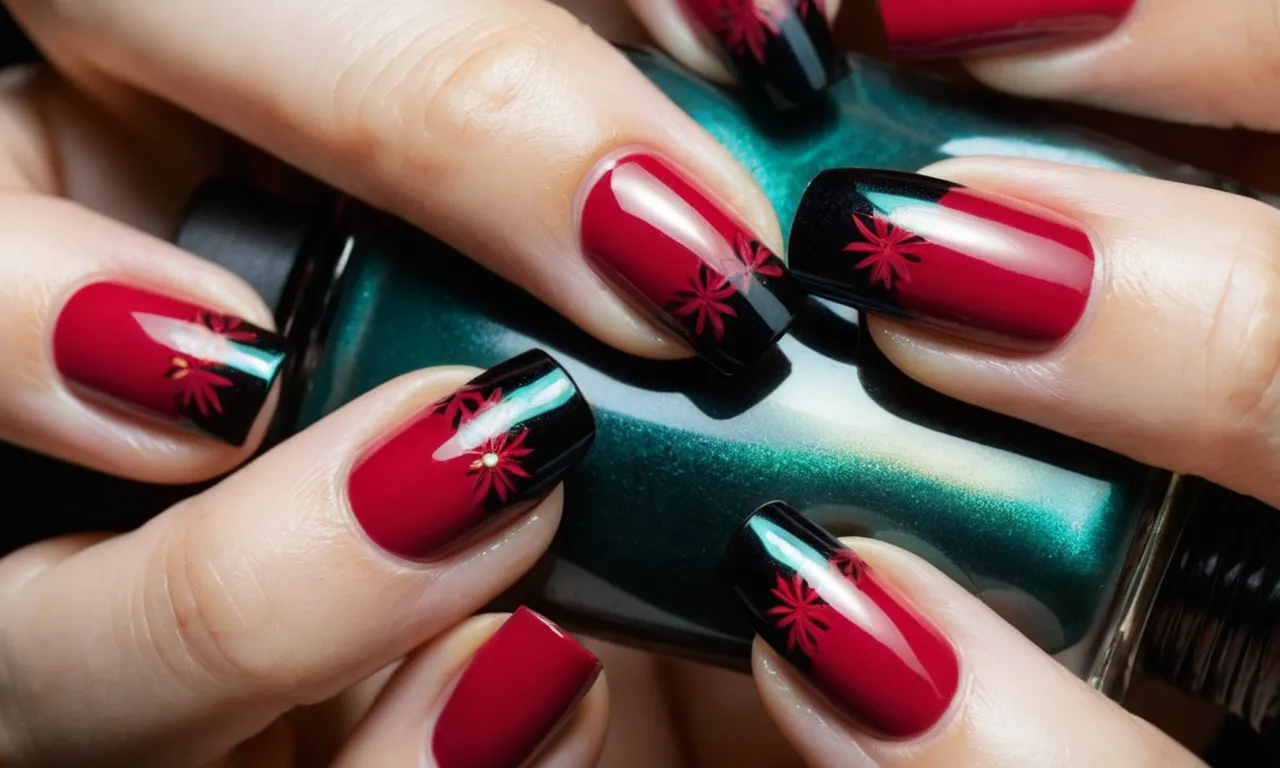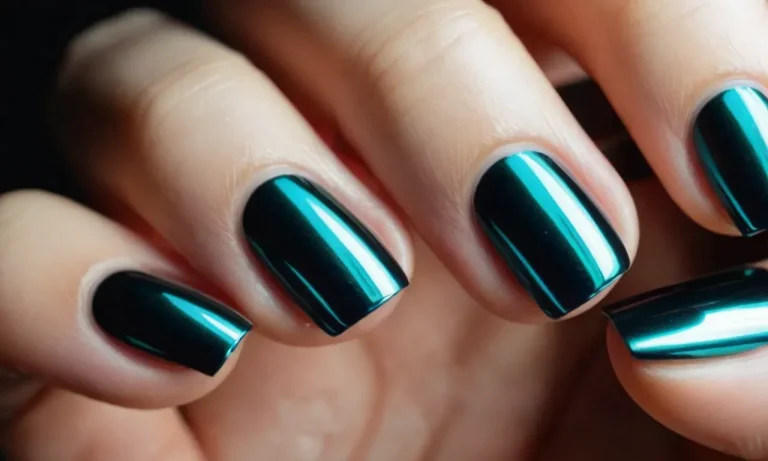Which Nail Grows The Fastest?
If you’ve ever gotten a manicure, you may have noticed that your fingernails seem to grow at different speeds. The search for the fastest growing nail is a common curiosity. Read on to find out which nail grows the fastest and why.
If you’re short on time, here’s a quick answer to your question: the middle fingernail grows the fastest for most people.
Measuring Nail Growth
How to Track Nail Growth
Tracking your nail growth over time can provide useful insight into the health of your nails. Here are some tips for accurately measuring nail growth:
- Mark your nail near the cuticle using a pen or nail polish. Make a straight line across all nails you want to measure.
- Wait 4 weeks and mark a new line across your nails near the new cuticle location.
- Measure the distance between the two marks in millimeters using a ruler or calipers for precise measurement.
- Calculate the growth per month by dividing the total growth over 4 weeks by 4 to determine your average weekly growth. Then multiply this number by 52 weeks per year and divide by 12 months to calculate your monthly nail growth rate.
Tracking growth for 2-3 months will give you an accurate average. Be sure to keep nails trimmed to the same length each time to ensure consistent measurement.Using this easy technique provides helpful data to present to your doctor or nail technician about changes in nail growth over time.
Growth Rate Per Month
On average, fingernails grow around 3-4 millimeters per month. However, many factors influence growth speed, leading to fairly significant variation among different groups of people.
Here is an overview of how demographic factors impact monthly fingernail growth rates:
- Age: Fingernails grow fastest between ages 16-20, averaging over 4 mm per month. Growth slows down after age 50, with average growth under 2 mm per month for those over 70 years old.
- Gender: Research shows females have a 25% faster rate than males on average. So females may exceed 4 mm per month, while males grow around 3 mm monthly.
- Health Conditions: Thyroid disorders, diabetes and nutritional deficiencies can all slow nail growth. Some medications like chemotherapy also impact growth plateaus.
- Seasons: More rapid summer nail growth peaks at 4-5 mm monthly for most people. Colder winter months often dip as low as 2-3 mm per month on average.
- Pregnancy: Hormone changes cause nail growth to significantly accelerate during pregnancy, sometimes doubling the normal rate.
- Hand Dominance: Research indicates nails on the dominant hand appear to grow slightly faster on most right-handed people.
While genetics plays a key role, optimizing health and nutrition can help maximize your nail growth potential within your body’s natural range.
Which Fingernail Grows Fastest?
Middle Finger
The middle finger nail is often the fastest growing nail on most people’s hands (about 3.47 mm per month). According to a study published in the scientific journal Nature, the reason is likely due to the longer nail bed size and greater blood supply to the middle finger.
As the longest finger, the middle finger has a greater nail matrix, which is the part of the nail that actually produces the nail cells. More matrix means more nail growth potential. The middle finger also tends to have better circulation than the other fingers, bringing more nutrients to stimulate growth.
Ring Finger
The ring finger nail is typically the second fastest growing nail, averaging around 3.42 mm of growth per month. While it does not have the length of the middle finger, the ring finger nail bed is still relatively long. Blood circulation to the ring finger is also significant.
According to some scientists, the reason the ring finger nail grows fast is due to its connection to the heart via the venous blood system. This theory suggests growth rate is linked to cardiac output. However more research is needed to investigate this idea further.
Index Finger
The index finger nail grows at a pace of around 3.38 mm per month, making it the third fastest growing nail. As the finger used most often for everyday tasks from typing to writing, the index finger receives a lot of stimulation which encourages growth.
While the index finger nail bed is shorter than the middle and ring fingers, it still receives a healthy amount of blood flow. The frequent use of the index finger may promote increased peripheral circulation according to some nail experts.
Pinky
With an average growth rate of around 3.09 mm per month, the pinky nail is the second slowest growing nail on the hand. Due to its position on the outer edge of the hand, it has a shorter nail bed in comparison to other fingers.
Some research suggests the pinky nail receives less blood circulation than the other fingers, reducing growth speed. However, injuries or conditions affecting blood supply and nerve damage to the hands can sometimes distort typical growth patterns.
Thumb
The thumbnail has the slowest growth rate, growing at approximately 2.16 mm on average per month. The nail bed of the thumb is much shorter than other fingers, limiting its potential for growth.
The thumb also has less blood circulating through it than the other digits. However, the nail is still perfectly designed for the functional tasks the thumb performs, enabled by a wider and rounder shape.
What Impacts Nail Growth?
Age
Nail growth rate peaks during the late teens and early 20s. As we age, nail expansion begins to slow down due to reduced blood circulation and cell turnover. By the 60s and 70s, nails may grow at half the speed compared to our younger years.
Proper nutrition can help maintain faster nail regeneration as we get older.
Health
Illnesses like hypothyroidism and diabetes can hamper nail development. Nutrient deficiencies, chemotherapy medications, and inflammatory disorders may also stunt nail growth. On the flip side, during pregnancy, nails tend to grow faster from increased estrogen levels.
Overall, those in good health tend to have nails that grow quicker.
Seasons and Weather
Hot and humid weather causes nails to grow faster as blood vessels expand, stimulating nail matrix cells. Colder seasons when hands and feet are stuffed in gloves and socks slow down circulation, resulting in sluggish nail growth. Artificial heating also dries out the skin and nails.
Abundant moisture is key for rapid nail regeneration.
Pregnancy
Nails tend to grow more quickly during pregnancy, even up to 30-50% faster due to elevated estrogen levels stimulating nail matrix cells. Many women happily sport longer, more lustrous nails as a side effect of their body changes during gestation.
Post-pregnancy, nails usually return to normal growth patterns.
Injuries and Nail Biting
Trauma like slamming fingers in doors or dropping heavy objects can injure nails and temporarily halt growth. Nail biting and picking also damages the matrix root slowing down nail expansion while the injury mends. On average, nails take about 6 months regrow completely after injury.
Preventing trauma means faster, healthier nail growth.
How to Make Nails Grow Faster
Vitamins and Minerals
Getting adequate vitamins and minerals can help your nails grow stronger and faster. Biotin, also known as vitamin B7, is particularly important for healthy nail growth. Studies show that taking 2.5 mg of biotin daily can significantly improve nail thickness and reduce brittleness (1).
Other B vitamins like B12 and folic acid are also beneficial. Make sure to eat biotin-rich foods like eggs, avocados, salmon, and nuts.
Getting enough zinc is also crucial, as it aids in protein synthesis required for nail growth. Great zinc sources include oysters, meat, beans, and nuts. Vitamin C, found in citrus fruits and veggies, is also key. It promotes collagen production for firm nail beds.
Nail Treatments
Certain topical nail treatments can speed up growth. Look for nail polishes and creams containing hydrolyzed wheat protein and soybean oil. Massaging vitamin E oil into nails and cuticles nightly can also improve growth and thickness. You may see results in just 1-2 weeks.
Bi-weekly manicures can also help nails grow faster by removing old nail cells and promoting new growth. Gently push back and trim cuticles after softening them in warm water. Apply a thick moisturizing cream after to stimulate the matrix.🚀
Avoid Damage
Preventing nail damage is crucial for healthy growth. Avoid repeated manicures, gel polish, acrylics, and other harsh chemicals. The removers eat away at the nail plate over time. Also, don’t pick at peeling nails, as this can pull the nail plate away from the nail bed.
Wear gloves during housework and gardening. The friction and irritation can slow growth. When possible, avoid very hot water which can dry out nails.😫 Also, watch for nail biting and picking, which hampers growth.
Moisturize Cuticles
Dry, cracked cuticles hinder fast nail growth. Massage nourishing oils like jojoba, olive, or almond into the cuticles daily. After removing old polish, soak fingers in warm water mixed with a moisturizing bath oil. Push back cuticles gently using a wooden stick after they soften.
Lather on thick cuticle cream after.👍
Schedule bi-weekly manicures for cuticle care. The technician can safely trim excess cuticle growth that can slow nail growth. Just avoid overzealous trimming that can damage the nail matrix.😱 With diligent moisturizing and trimming, your cuticles and nails will thrive!🥳
Conclusion
Now you know that the middle fingernail is usually the fastest growing nail. Understanding what impacts nail growth can help you take better care of your nails. With proper nutrition and nail care, you may be able to get your nails growing faster.







